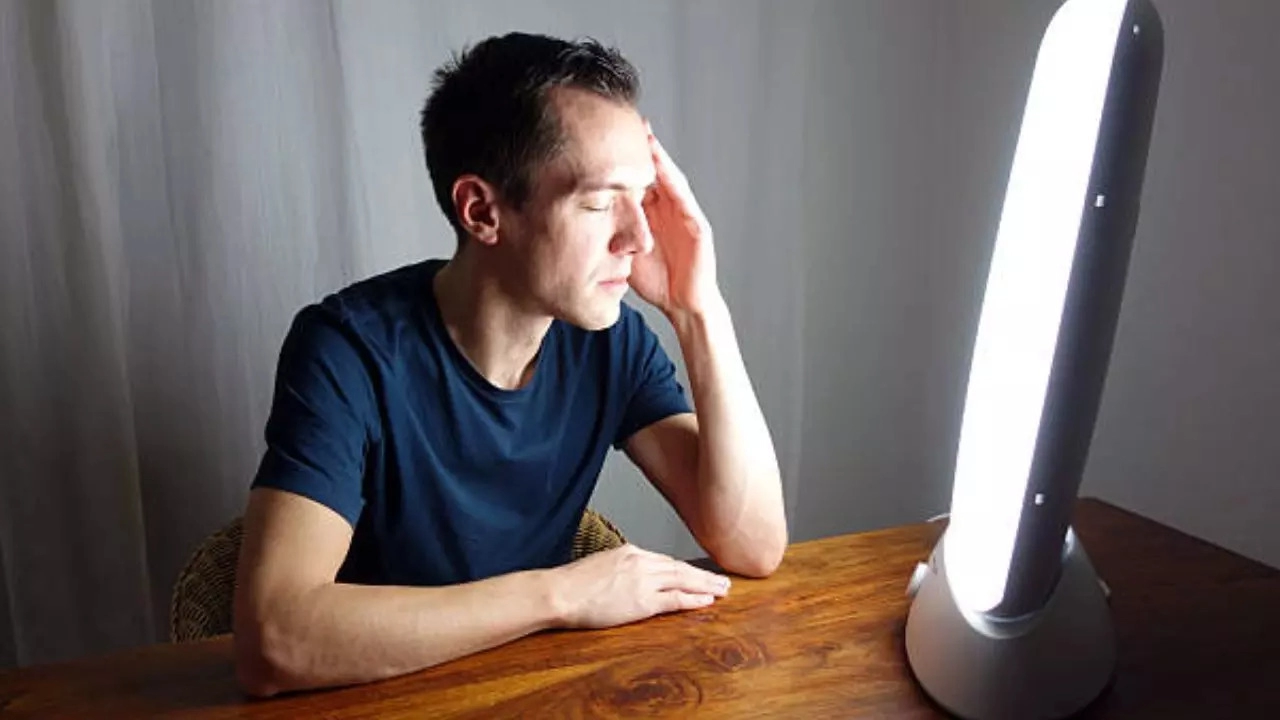Pallavi Mehra • 08 Oct 2024
Bright Light Therapy May Help Combat Depression: Study

Bright Light Therapy May Help Combat Depression: Study (Image Credits: iStock)
Bright light therapy, commonly used to treat seasonal depression that occurs during the dark winter months, may also offer relief for people who suffer from nonseasonal depression, according to new research. Traditionally associated with seasonal affective disorder (SAD), bright light therapy involves exposure to intense light to help regulate mood. However, a new study suggests that this therapy could benefit people experiencing depression year-round.
The study, published in JAMA Psychiatry on October 2, analyzed data from 858 adults with nonseasonal depression across 11 clinical trials. Participants were randomly assigned to receive bright light therapy, either alone or combined with antidepressants, while control groups received medication, a placebo, or dim red light therapy as a comparison.
Results showed that people who underwent bright light therapy were more than twice as likely to report reduced depressive symptoms or experience remission compared to those who did not receive the therapy. Remission in this context refers to a return to normal levels of social functioning. This finding indicates that bright light therapy could be a viable treatment option not just for those with seasonal depression, but for people with various forms of nonseasonal depression as well.
Interestingly, the study highlighted the effectiveness of both short- and long-term use of bright light therapy. Participants who received treatment lasting less than four weeks were three times more likely to see symptom improvement or remission. For treatments lasting longer than a month, improvement or remission occurred at twice the rate in comparison to control groups. These results suggest that bright light therapy can have a significant impact on depressive symptoms even with a shorter treatment duration.
"Our findings suggest that a one-week duration of bright light treatment may be as effective as a six-week duration,” said Artur Menegaz de Almeida, the study's lead author from the Federal University of Mato Grosso in Brazil. Most sessions of bright light therapy administered during the study lasted at least 30 minutes. The light boxes used had a brightness of 10,000 lux, which is equivalent to the light on a clear day outdoors.
However, the study noted certain limitations. The clinical trials varied in duration, making it difficult to determine an optimal length of treatment. Additionally, the researchers were unable to differentiate between the effects of bright light therapy on people with bipolar disorder versus those with other forms of nonseasonal depression. Further research is needed to explore how the therapy affects different types of depression.
For those considering bright light therapy, it’s important to use the right type of light box, says Raymond Lam, MD, a psychiatry professor at the University of British Columbia in Vancouver, who was not involved in the study. A good light box, also known as a light therapy lamp, should emit at least 10,000 lux of light and be large enough to illuminate the user while sitting a few feet away.
“You don’t have to stare at it,” says Dr Lam. “You can read or eat breakfast or check your email, but you have to be awake because it won’t work if you’re sleeping or your eyes are closed.”
Timing is crucial when using bright light therapy. According to Dr Lam, the best time to use a light therapy lamp is in the morning, as this is when the body’s circadian rhythm, or biological clock, is most responsive. Exposure to bright light early in the day helps trigger brain chemicals that improve mood. On the other hand, light therapy at noon or later in the day is not effective for mood improvement. “It doesn’t matter how much light you get throughout the day,” Lam explains. “It’s how much bright light you get in the morning.”
Despite the potential benefits of bright light therapy, Dr Lam emphasizes that it is not a substitute for professional medical advice or treatment. People experiencing symptoms of depression, particularly major depressive disorder, should consult a healthcare professional before starting light therapy. This is especially important for those with bipolar disorder, as bright light therapy could potentially trigger manic episodes.
Get Latest News Live on Times Now along with Breaking News and Top Headlines from Mental Health, Health and around the world.